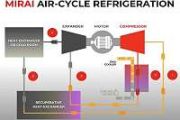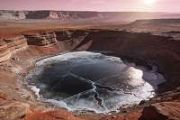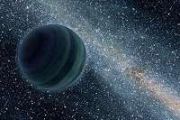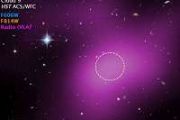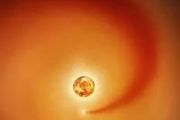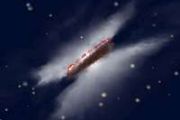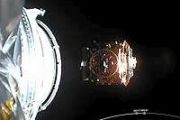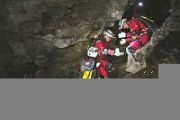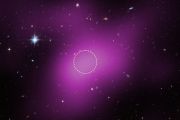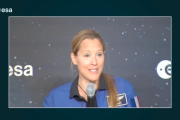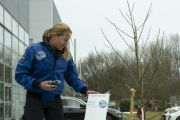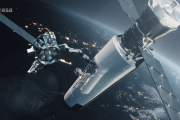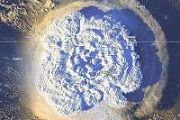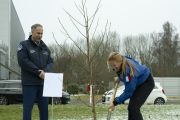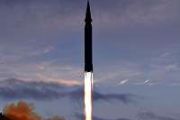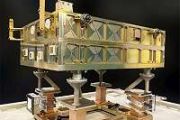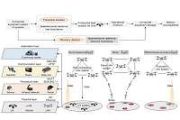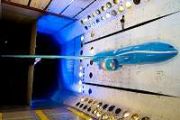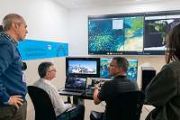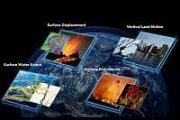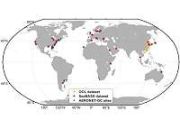
Copernical Team
Robot with charging features to support China's 2028 Lunar program
 Chinese researchers are developing a sophisticated lunar robot with integrated charging capabilities, slated to join the Chang'e 8 mission, planned for launch in 2028.
A collaboration between Dalian University of Technology, Hong Kong University of Science and Technology, and Shenzhen University has led to the creation of a versatile lunar surface robot that will function both as a researc
Chinese researchers are developing a sophisticated lunar robot with integrated charging capabilities, slated to join the Chang'e 8 mission, planned for launch in 2028.
A collaboration between Dalian University of Technology, Hong Kong University of Science and Technology, and Shenzhen University has led to the creation of a versatile lunar surface robot that will function both as a researc Characterizing visual challenges for astronauts at the Lunar South Pole
 NASA is preparing to send humans back to the Moon with the Artemis program, aiming to establish a long-term presence on the lunar surface. The Lunar South Pole (LSP) has been chosen for its continuous line-of-sight communication with Earth, extended solar exposure, and proximity to vital resources like water ice. However, the unique environment of the South Pole presents significant challenges,
NASA is preparing to send humans back to the Moon with the Artemis program, aiming to establish a long-term presence on the lunar surface. The Lunar South Pole (LSP) has been chosen for its continuous line-of-sight communication with Earth, extended solar exposure, and proximity to vital resources like water ice. However, the unique environment of the South Pole presents significant challenges, Fit for service Themis reusable rocket stage reaches key development milestone
 In December 2024, Europe's Themis reusable rocket first-stage demonstrator successfully completed a critical 'full fit-check' at ArianeGroup's Les Mureaux facility in France.
This significant step verified that all core components of Themis - including mechanical connections and interfaces - integrate seamlessly, ensuring the lower and upper segments align and connect as intended.
St
In December 2024, Europe's Themis reusable rocket first-stage demonstrator successfully completed a critical 'full fit-check' at ArianeGroup's Les Mureaux facility in France.
This significant step verified that all core components of Themis - including mechanical connections and interfaces - integrate seamlessly, ensuring the lower and upper segments align and connect as intended.
St Improving precision landing of reusable rockets
 Powered descent guidance (PDG) plays a critical role in enabling reusable rockets to achieve precise landings on Earth. Unlike lunar or planetary landings, endoatmospheric PDG must contend with complex nonlinear dynamics and challenging conditions such as engine thrust fluctuations, aerodynamic uncertainties, and wind disturbances. These factors can significantly affect landing accuracy, increas
Powered descent guidance (PDG) plays a critical role in enabling reusable rockets to achieve precise landings on Earth. Unlike lunar or planetary landings, endoatmospheric PDG must contend with complex nonlinear dynamics and challenging conditions such as engine thrust fluctuations, aerodynamic uncertainties, and wind disturbances. These factors can significantly affect landing accuracy, increas Chang'e-6 study highlights dynamic history of lunar magnetic field
 A study of farside basalts returned by China's Chang'e-6 mission has unveiled evidence of a significant resurgence in the Moon's magnetic field approximately 2.8 billion years ago (Ga). This discovery offers key insights into the lunar dynamo and its impact on the Moon's interior and surface evolution.
The Chang'e-6 mission provided the first basalt samples from the Moon's farside, filling
A study of farside basalts returned by China's Chang'e-6 mission has unveiled evidence of a significant resurgence in the Moon's magnetic field approximately 2.8 billion years ago (Ga). This discovery offers key insights into the lunar dynamo and its impact on the Moon's interior and surface evolution.
The Chang'e-6 mission provided the first basalt samples from the Moon's farside, filling Rocket Lab closes record year with successful Synspective satellite deployment
 Rocket Lab USA, Inc. (Nasdaq: RKLB) has announced the successful deployment of a satellite for Synspective, marking the company's 16th mission of 2024 and closing a record-breaking year with a 60% increase in launches compared to 2023.
The mission, titled "Owl The Way Up," launched from Rocket Lab Launch Complex 1 in Mahia, New Zealand, on December 22 at 03:17 NZT. Aboard the Electron rock
Rocket Lab USA, Inc. (Nasdaq: RKLB) has announced the successful deployment of a satellite for Synspective, marking the company's 16th mission of 2024 and closing a record-breaking year with a 60% increase in launches compared to 2023.
The mission, titled "Owl The Way Up," launched from Rocket Lab Launch Complex 1 in Mahia, New Zealand, on December 22 at 03:17 NZT. Aboard the Electron rock NASA's Parker Solar Probe sets new record for sun proximity
This request seems a bit unusual, so we need to confirm that you're human. Please press and hold the button until it turns completely green. Thank you for your cooperation!
Press and hold the button
If you believe this is an error, please contact our support team.
185.132.36.159 : ba02411a-6e46-4793-bb87-4669d4e1
China's human spaceflight program achieves key milestones in 2024
 China concluded a busy year in its human spaceflight program with the launch of the Tianzhou 8 cargo spacecraft on November 16, marking the completion of the country's 2024 space missions. This year featured several significant achievements, including advancements in orbital science, space station operations, and astronaut training.
h3>April Launch of Shenzhou XVIII /h3>
On April 25, a L
China concluded a busy year in its human spaceflight program with the launch of the Tianzhou 8 cargo spacecraft on November 16, marking the completion of the country's 2024 space missions. This year featured several significant achievements, including advancements in orbital science, space station operations, and astronaut training.
h3>April Launch of Shenzhou XVIII /h3>
On April 25, a L Two new radio telescopes enhance China's deep space exploration
 Two advanced radio telescopes, each with a 40-meter-diameter antenna, have officially entered service to bolster China's deep space exploration and astronomical research efforts. The telescopes are situated on Changbai Mountain in Jilin province and in Shigatse, Xizang autonomous region, the Shanghai Astronomical Observatory announced on Friday.
The telescopes enhance China's Very Long Bas
Two advanced radio telescopes, each with a 40-meter-diameter antenna, have officially entered service to bolster China's deep space exploration and astronomical research efforts. The telescopes are situated on Changbai Mountain in Jilin province and in Shigatse, Xizang autonomous region, the Shanghai Astronomical Observatory announced on Friday.
The telescopes enhance China's Very Long Bas Parker Solar Probe makes history with closest pass to Sun
 Operations teams have confirmed NASA's mission to "touch" the Sun survived its record-breaking closest approach to the solar surface on Dec. 24, 2024.
Breaking its previous record by flying just 3.8 million miles above the surface of the Sun, NASA's Parker Solar Probe hurtled through the solar atmosphere at a blazing 430,000 miles per hour - faster than any human-made object has ever moved
Operations teams have confirmed NASA's mission to "touch" the Sun survived its record-breaking closest approach to the solar surface on Dec. 24, 2024.
Breaking its previous record by flying just 3.8 million miles above the surface of the Sun, NASA's Parker Solar Probe hurtled through the solar atmosphere at a blazing 430,000 miles per hour - faster than any human-made object has ever moved 



